The Gallery of Crowd Behavior: Goodbye All Time Highs
Oct 24, 2014
Doug Wakefield
"Complex
Systems that have artificially suppressed volatility tend to become extremely fragile,
while at the same time exhibiting no visible risks. In fact, they tend to be
too calm and exhibit minimal variability as silent risks and accumulate beneath
the surface. Although the stated intention of political leaders and economic
policymakers is to stabilize the system by inhibiting fluctuations, the result
tends to be the opposite." Nassim
Nicholas Taleb and Mark Blyth, May/June 2011 issue of Foreign Affairs

“
The October 2014 Global Financial Stability Report (GFSR) finds that six years after
the start of the crisis, the global economic recovery continues to rely heavily
on accommodative monetary policies in advanced economies. Monetary
accommodation remains critical in supporting the economy by encouraging
economic risk taking in the form of increased real spending by households and
greater willingness to invest and hire by businesses. However, prolonged
monetary ease may also encourage excessive financial risk taking.” IMF Global Financial
Stability Report, Oct 8 ‘14
Financial
Storm Clouds Cast A Deep Shadow Over IMF Summit, The Guardian, Oct 11, ‘14
“Ever
since the global economy bottomed out in the spring of 2009, the hope has been
that the world would return to the robust levels of growth seen in the years
leading up to the financial crash. Time and again, the optimism has proved
misplaced, with the IMF repeatedly revising down its forecasts. This year was
no exception….
What
concerns the IMF is that the slowdown – particularly in the advanced countries
of the west – may be permanent….
José
Viñals, the IMF’s financial counselor, said: “Policymakers are facing a new global
imbalance: not enough economic risk-taking in support of growth, but increasing
excesses in financial risk-taking posing stability challenges.”
On
November 2, 2007, I released my first “The
Gallery of Crowd Behavior” piece. On May 2, 2011, I released “The
Gallery of Crowd Behavior Returns”.
The
first one focused on the Hong Kong stock market. The second primarily on the
euro and dollar. Below are multi year charts of these three markets at the time
these two public articles were released.
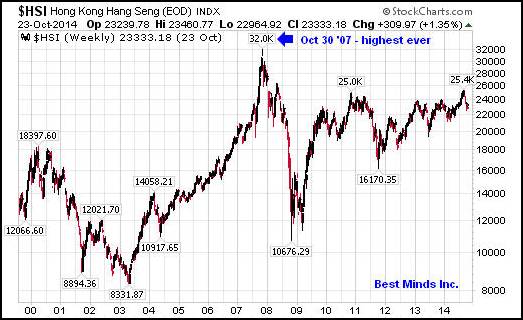
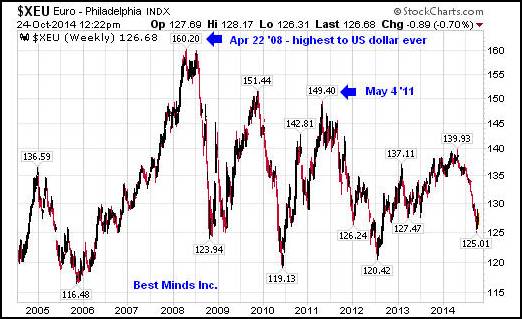

Now
before you point out that I am a cherry picking articles that illustrate the
timing of information and turning points in history that look very good, I will
admit that is exactly what I have done. However, I have learned from some of
the best technicians in the financial industry that market technicians ARE the
ones who are looking for a point where markets could turn. That’s part
of their job.
So
on this Friday, October 24, 2014, after watching world markets since the close
of September options on September 19th, I thought that it might be a
good time to review a few pictures hanging in the current “gallery”. Clearly,
if the weeks and months ahead prove that September 19th was THE
final top in US stocks in the latest and largest global financial bubble on
record, then my comments will not have come within a few days of THE last “all
time high” hyped headline.
As
world markets come into the Federal Reserve’s next scheduled press release on
Wednesday, Oct 29th, we are all waiting for two issues to be
resolved; will they continue their path since December 18, 2013 and announce
that effective November 1st, QEIII funds go to zero, and will the
Dow be able to break above 17,000 or will this line prove to be the final wall
of resistance before starting the next phase of selling?
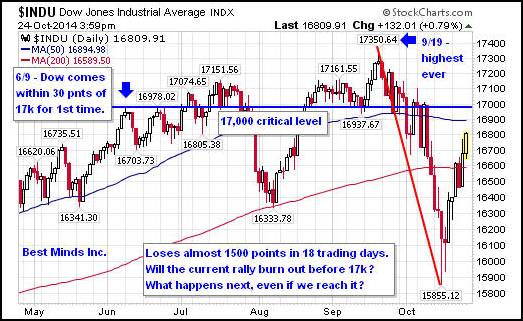
While
we wait to learn the answer, let me share with you a few charts you may not
have seen. I would encourage you to share these with family, friends, business
associates….anyone. Ask yourself, “Does this look like sustainable long term
behavior, or more like the Japanese stock markets ascent to the heavens before
starting the longest bear market in modern history in January 1990, and the 83%
collapse of the NASDAQ 100 when the dot.com bubble burst, comparable to the 89%
collapse of the Dow between 1929 and 1932?”
If
you believe this behavior looks very unsustainable, then what actions are you
planning on making or have made with your investments? Do you know which
markets have been declining for the last 3 years, while others have been advancing
over the same timeframe? Do you have a strategy in place to capitalize on this
huge shift across global markets?
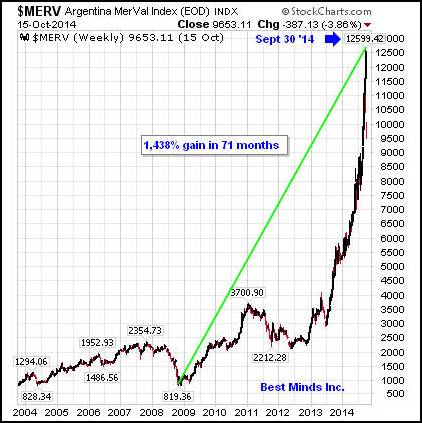


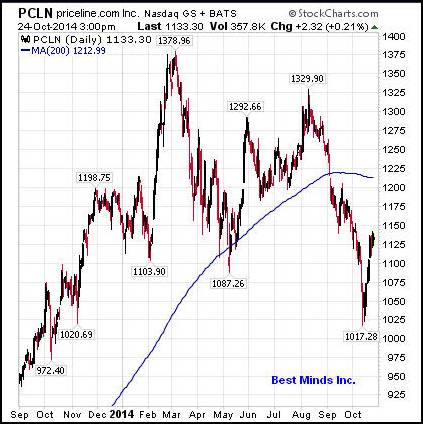

[Source
of chart above, The Yuan Stops Here, 7/15/14]


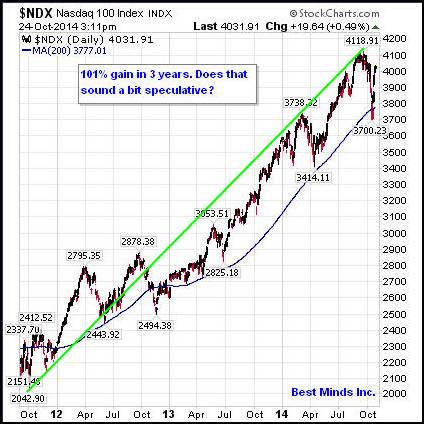
In
2007, the Hang Seng hit its highest level ever, and collapsed over 66% in the
next year. In 2011, the dollar produced a bottom and the euro hit a top that
has held for almost 3 and ½ years.
Isn’t
it time all managers, business leaders, investors, political leaders, etc, etc,
dust off the lessons that should have been learned from the two most
destructive bear markets from financial speculation based on the idea of
“unlimited money” and cheap credit? Isn’t it time for everyone to review their
own plans in light of what the “gallery” is showing us from around the globe?
Do we really need to experience the downside of the next financial mountain to
understand what can happen when crowds, whether computers or humans, move from
buy to sell?

[Source
– Lance
Roberts of STA Wealth Management, Zero Hedge, 10/23/14]
Bulls
become bears, and bears become bulls.
“Every
boom must one day come to an end.” – Ludwig von Mises (1928)
“Therefore everyone
who hears these words of Mine and acts on them, may be compared to a wise man
who built his house on the rock. And the rain fell, and the floods came, and
the winds blew and slammed against that house; and yet it did not fall, for it
had been founded on the rock. Everyone who hears these words of Mine and does
not act on them, will be like a foolish man who built his house on the sand.
The rain fell, and the floods came, and the winds blew and slammed against that
house; and it fell—and great was its fall.”
When Jesus had
finished these words, the crowds were amazed at His teaching; for He was
teaching them as one having authority, and not as their scribes.” Matthew 7:
24-29
Complacency Time Has Gone
If
you have no experience in growing money on the downside of a financial
bubble, I cannot think of a better time to subscribe to The Investor’s Mind.
Yesterday, I released a special global edition called, At the Top of the World.
It is amazing with all the hype given “another all time high” since the start
of 2013, how little attention has been given to various world markets that have
not returned to that level since reaching it in 2008, 2000, and yes, even
1990.
The
cost for procrastination is rising rapidly, and the value for good research
becoming extremely low in comparison to the speed in which wealth can be
destroyed. Click here
to start the next six months reading the newsletters and trading reports as
we come through this incredible period in market history, and attain my latest
special edition of The Investor’s Mind: At the Top of the World.
Doug
Wakefield
President
Best Minds Inc. a Registered Investment
Advisor
1104
Indian Ridge
Denton,
Texas 76205
Phone
- (940) 591 - 3000
Best Minds, Inc is a registered investment advisor that
looks to the best minds in the world of finance and economics to seek a
direction for our clients. To be a true advocate to our clients, we have found
it necessary to go well beyond the norms in financial planning today. We are
avid readers. In our study of the markets, we research general history,
financial and economic history, fundamental and technical analysis, and mass
and individual psychology.